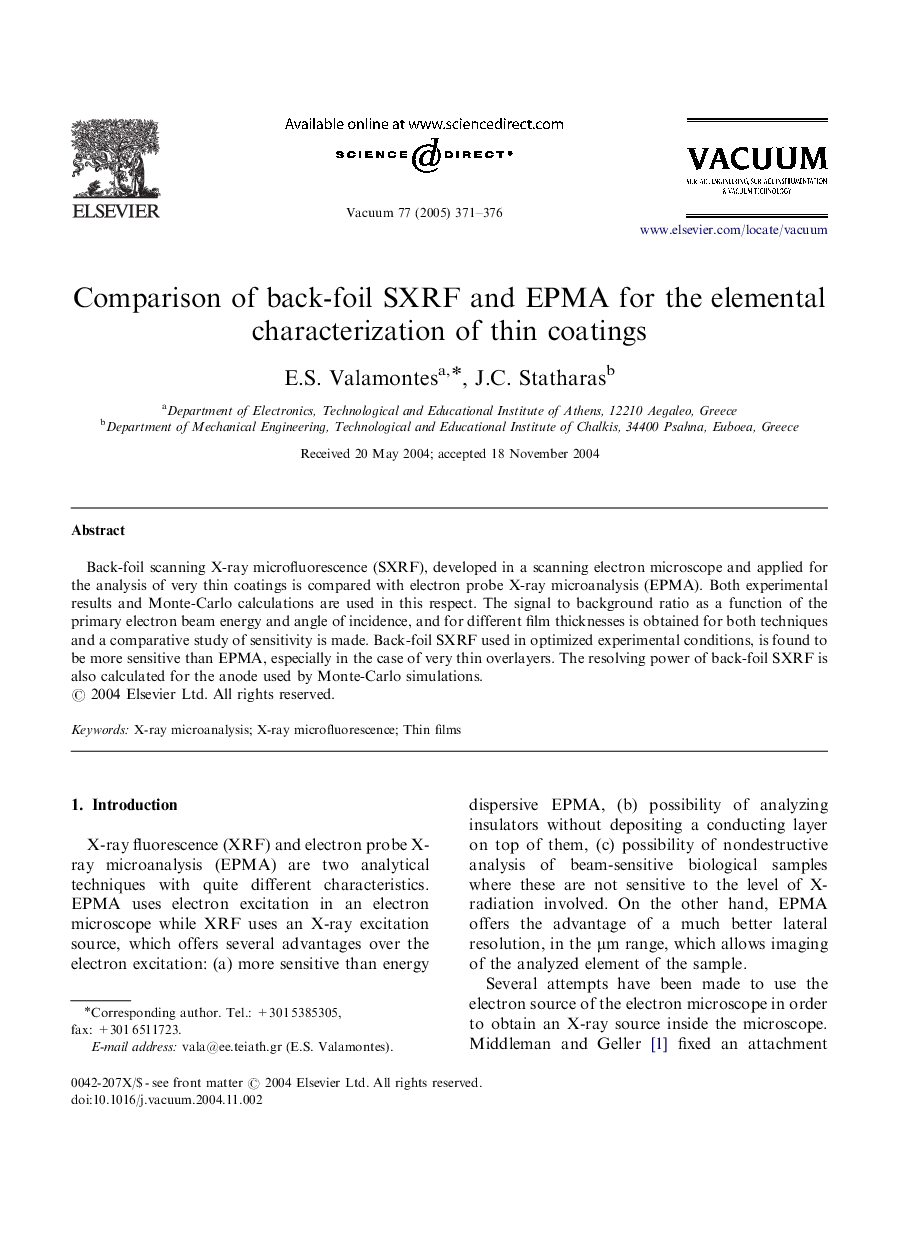| Article ID | Journal | Published Year | Pages | File Type |
|---|---|---|---|---|
| 10676479 | Vacuum | 2005 | 6 Pages |
Abstract
Back-foil scanning X-ray microfluorescence (SXRF), developed in a scanning electron microscope and applied for the analysis of very thin coatings is compared with electron probe X-ray microanalysis (EPMA). Both experimental results and Monte-Carlo calculations are used in this respect. The signal to background ratio as a function of the primary electron beam energy and angle of incidence, and for different film thicknesses is obtained for both techniques and a comparative study of sensitivity is made. Back-foil SXRF used in optimized experimental conditions, is found to be more sensitive than EPMA, especially in the case of very thin overlayers. The resolving power of back-foil SXRF is also calculated for the anode used by Monte-Carlo simulations.
Related Topics
Physical Sciences and Engineering
Materials Science
Surfaces, Coatings and Films
Authors
E.S. Valamontes, J.C. Statharas,
